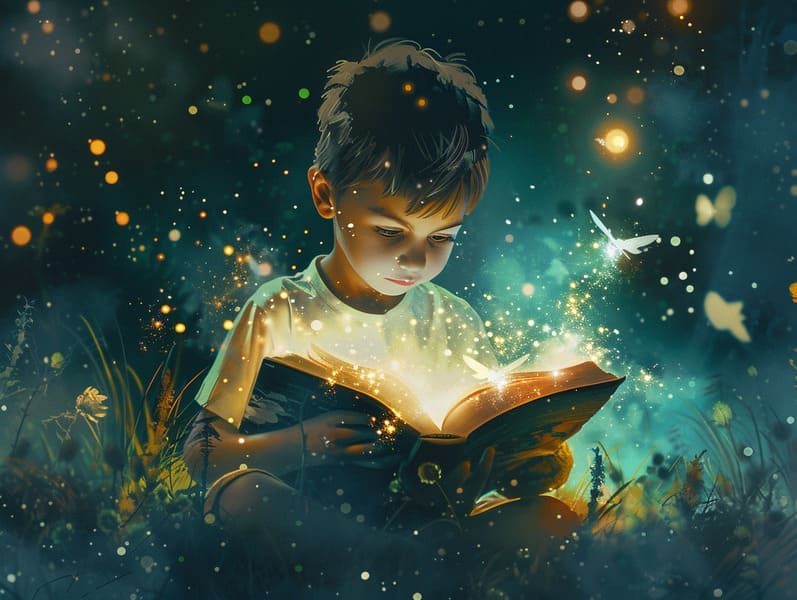The Inception of Grimm's Fairy Tales and Their Ageless Majesty.
The Inception of Grimm's Fairy Tales and Their Ageless Majesty.
Blog Article

Short fairy tales have timeless appeal. These stories have been recounted from one generation to the next long before they were ever documented. They emerged from a variety of cultures, including Asian traditions. They were initially narrated among older generations, often carrying themes and messages related to the societal norms and beliefs of the time.
The famous Grimm duo, the two Grimm brothers, were among the first to collect and release many of these beloved narratives. Their volume, "Grimm's Story Collection," included narratives like "The Story of Cinderella," "Little Brother and Little Sister," and "Snow-White and Rose-Red," which have since become hallmarks in the world of beloved fairy tales. Similarly, Hans Christian Andersen's fantastical narratives, such as "The Sea Maid," and "The Little Duckling," have captured hearts worldwide, solidifying their place in the pantheon of iconic fairy tales.
Despite their historical roots, these stories remain as pertinent as ever, especially as bedtime stories for kids. These charming stories are now available in different formats, including vibrantly illustrated books, delightful animations, and online fairy tales.
Their ongoing significance can be connected to several whimsical characteristics:
Key Lessons: Ancient fairy tales often impart important moral lessons. Tales like "The Story of the Boy Who Cried Wolf" teach the significance of being truthful, while "The Hare and the Tortoise" exemplify the benefits of persistence and meekness. These narratives offer little ones clear distinctions between ethical and unethical, molding their moral compass in a subtle yet impactful way.
Empathy and Understanding: Timeless fairy tales frequently feature protagonists facing problems and hurdles, provoking audiences to sympathize with their struggles and cheer for their triumphs. For instance, "Beauty's Beast" emphasizes the merit of looking beyond appearances to appreciate the real character of a soul, strengthening understanding and knowledge.
Cultural Knowledge: Many timeless fairy tales are imbued with the cultural contexts from which they were born. Engaging with these fairy tales can provide illuminating insights into different heritages, strengthening a sense of cultural understanding and awareness.
Fantasy and Imagination: The whimsical elements in traditional fairy tales—enchanted objects—foster children’s fantasy worlds. These stories guide readers to enchanted realms, engendering imaginative dreams and a sense of mystery that remains a lifetime.
Timeless fairy tales are not only entrancing but also edifying. They function as fascinating tools in promoting various cognitive and emotional skills in kids. When ancient fairy tales are spoken, they enhance linguistic abilities by presenting new word meanings and detailed sentence structures. This practice also improves hearing perception and attentiveness, as young readers remain attentive, keen to see what happens next.
Furthermore, conversing about the themes and characters of ancient fairy tales can promote critical thinking and logical thinking. Young ones are educated to recognize patterns, guess what will happen, and know cause find it here and effect. These explorations also help kids articulate their thoughts and feelings, advancing their emotional intelligence.
In today’s digital era, the prevalence of digital storybooks has made these fairy tales more available than ever. Web-based platforms and online apps extend wide arrays of children's fairy tales that can be seen or listened on anytime, anywhere. Fairy tales read aloud are particularly common, presenting an entertaining method for kids to enjoy these enchanting tales. Voice books and spoken videos bring characters and settings to life, often paired with captivating sound effects and harmonies that elevate the narrative experience.
The timeless charm of ancient fairy tales lies in their ability to adapt to the present while keeping hold of their key morals. Contemporary versions of these tales often highlight more representative figures and modern settings, making them understandable to today’s audience. However, the key lessons of valour, compassion, and truth remain unchanged, continuing to impact listeners of all ages.
Ancient fairy tales also offer a sense of security and knownness. They extend a structured narrative with a apparent beginning, middle, and end, often drawing to a close with the resolution of conflicts and the triumph of virtue over vice. This steadiness can be relieving for young readers, offering a sense of consistency in an inconstant world.
Ancient fairy tales continue to allure and enlighten new generations, maintaining their appeal and relevance in modern society. As nighttime stories for kids, they afford a perfect blend of fantasy and learning, promoting moral values, empathy, and creativity. The accessibility of internet fairy tales and the popularity of fairy tales recited assure that these ancient stories remain within reach to new generations.
By conserving and imparting these narratives, we continue to recognize the rich tapestry of creativity and cultural heritage. Whether you are exploring a vividly illustrated book, discovering a internet collection, or hearing an sound book, the loveliness of bedtime fairy tales is always within reach. These stories teach us of the everlasting effect of storytelling and its ability to bring us together across centuries and lands.
Even if you are experiencing a richly illustrated book, perusing a internet library, or listening to an sound book, the grandeur of classic fairy tales is always within reach.
These stories point out of the unceasing impact of narratives and its ability to unite us across eras and regions, weaving a spell that charms and informs alike.